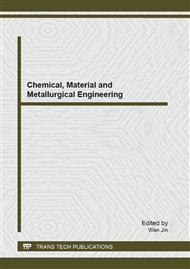[1]
S. V. Morozov: Vopr. Pitan. Vol. 81 (2012), p.42.
Google Scholar
[2]
R. S. Tang and F. K. Chan: Drugs Vol. 72 (2012), p.1605.
Google Scholar
[3]
S.J. Konturek, M. Cieszowski, W. Kwiechien, J. Konturek, J. Tasler and J. Bilski: Gastroenterol. Vol. 86 (1984), p.71.
Google Scholar
[4]
H. Satoh, N. Inatomi, H. Nagaya, I. Inadi, A. Nohara, N. Nakamura and Y. Maki: J. Pharmacol. Exp. Ther. Vol. 248 (1989), p.806.
Google Scholar
[5]
S. Marelli and F. Pace: Expert. Rev. Gastroenterol. Hepatol. Vol. 6 (2012), p.423.
Google Scholar
[6]
W. F. Malcolm and C. M. Cotton: Clin. Perinatol. Vol. 39 (2012), p.99.
Google Scholar
[7]
N. Hrelja and E. Zerem: Med. Arh. Vol. 65 (2011), p.52.
Google Scholar
[8]
J. J. Heidelbaugh, D. C. Metz and Y. X. Yang: Int. J. Clin. Pract. Vol. 66 (2012), p.582.
Google Scholar
[9]
V. Shakhnovich, R. M. Ward and G. L. Kearns: Clin. Pharmacol. Ther. Vol. 92 (2012), p.388.
Google Scholar
[10]
S. G. Agalave, S. R. Maujan and V. S. Pore: Chem. Asian J. Vol. 6 (2011), p.2696.
Google Scholar
[11]
M. Fronza, I. Merfort, R. Murillo, S. Slusarczyk, M. Adams, M. Hamburger, B. Heinzmann and S. Laufer: Bioorg. Med. Chem. Vol. 19 (2011), p.4876.
Google Scholar
[12]
Q. Liu, R. -J. Chen, C. -R. Yang, Y. -J. Zhang, Y. -F. Wang, M. -Y. Zhang and Y. -F. Wang: J. Nat. Prod. Vol. 72 (2009), p.969.
Google Scholar
[13]
J. Z. Wang, L. B. Zhu, K. Zou, F. Cheng, F. J. Dan, Z. Y. Guo, Z. J. Cai and J. Yang: J. Ethnopharmacol. Vol. 123 (2009), p.343.
Google Scholar
[14]
N. Huang, L. Chen, Z. Liao, H. Fang, J. Wang and K. Zou: Chinese J. Chem. Vol. 30 (2012), p.71.
Google Scholar
[15]
C. He, S. Guo, J. Ke, J. Hao, H. Xu, H. Chen and A. Lei: J. Am. Chem. Soc. Vol. 134 (2012), p.5766.
Google Scholar
[16]
H. Fang, L. Jin, W. Zai, Y. Song, J. Wang and N. Huang: Adv. Mater. Res. Vol. 634-638 (2013), p.1192.
Google Scholar
[17]
J. Hou, X. Liu, J. Shen, G. Zhao and P. G. Wang: Expert. Opin. Drug Discov. Vol. 7 (2012), p.489.
Google Scholar


